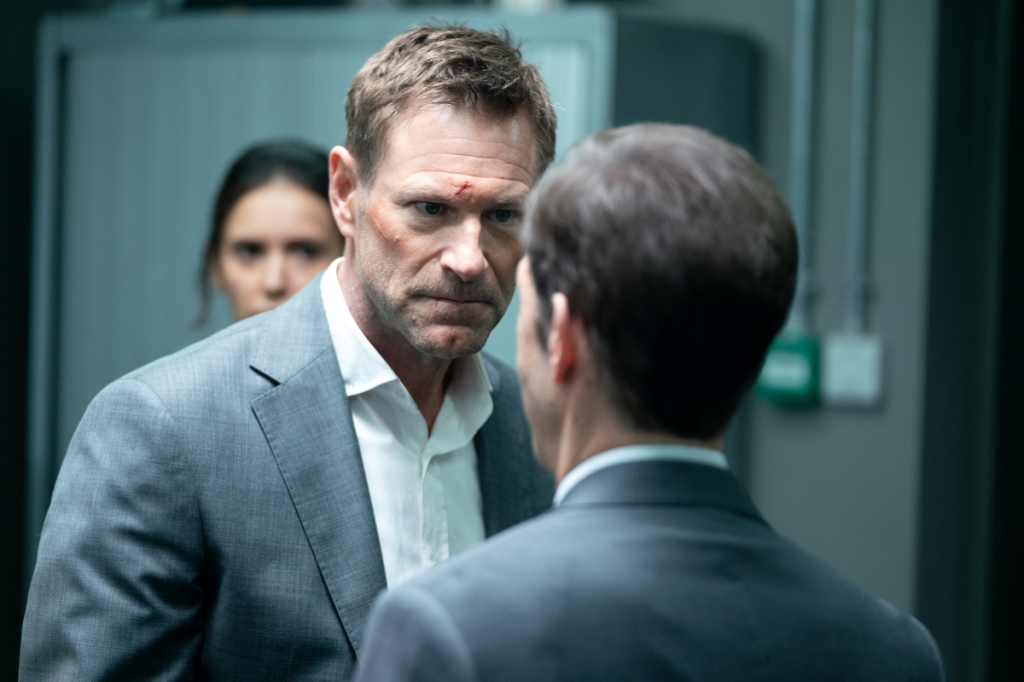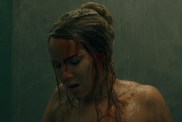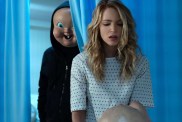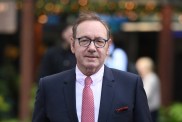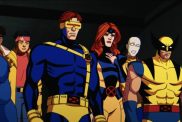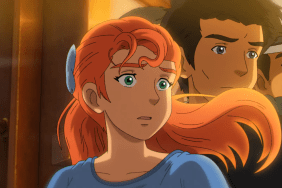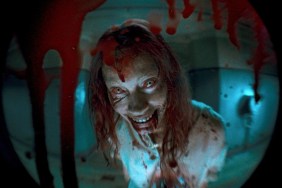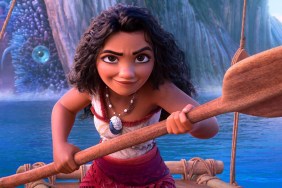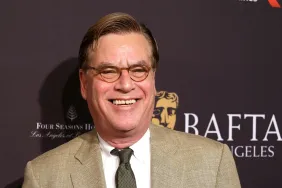ComingSoon Editor-in-Chief Tyler Treese spoke with The Bricklayer director Renny Harlin about the action thriller movie starring Aaron Eckhart and Nina Dobrev. The veteran director discussed his approach to action and not falling into tropes. The film is now available digitally and through video-on-demand platforms.
“The Bricklayer follows a rogue insurgent blackmailing the CIA by assassinating foreign journalists and making it appear the agency is responsible,” reads the movie‘s synopsis. “As other nations begin turning against the U.S., the CIA must lure Steve Vail (Eckhart) – their most brilliant and rebellious operative – out of retirement. With an elite and deadly skill set, Vail is tasked with helping clear the agency’s name, forcing him to confront his checkered past while unraveling an international conspiracy.”
Tyler Treese: One aspect I found really interesting was that Aaron Eckhart’s character is not in his prime. He’s been out of the game for a bit in these fight scenes. He’s not just completely whooping ass. Can you speak to your approach to these fight scenes?
Renny Harlin: I wanted to go back to the movies I grew up with and loved. Starting in the seventies, you know — Don Siegel, Sam Peon. Stars like Clint Eastwood and Steve McQueen. Create a character who is entertaining to watch but is very rooted in reality. I’ve always aimed for realistic violence within the framework of movies. Movies are always a little bit outlandish in a way. But I’ve wanted to create action and violence that feels real and has real consequences. So people really get hurt when they get punched and kicked at — or shot at.
It’s bloody. It’s sweaty. It’s dirty. That was my approach. Not superheroes, but really people who you can to. You can relate to the pain that they go through. Aaron’s character, of course, has been around the block and has a lot of experience. He’s a little rusty, but he still comes out on top in the end. But he has to really go through a lot to get there. So that’s what I wanted the audience to experience. I wanted the audience to be able to relate to the characters and not be watching a CG superhero story. [It’s] a real bloody, dirty story with real people fighting for their lives and trying to do a good job.
Yeah, that really comes through. And one aspect of the realism I really like is Aaron’s character taking damage over time. It’s actually factored into the fights he’s worn down. By the end, he’s taken his licks. How is it, filming those scenes and making sure you have the correct order? That’s a lot of injuries to keep track of.
It is. You’re absolutely right. We plan the action sequences very carefully. Actually, the first one — which is on the rooftop at night in the rain — I wrote that sequence. It wasn’t in the script at all, but I felt like the movie being an action thriller, it went on too long without an action scene. So I said, “We need this introductory scene here to kick off the movie in the right way.” It’s one thing, what’s on the page, in the script. “A bunch of guys attack the hero, and then they fight.” So you have to come up with the choreography. And I did that together with my stunt coordinator and our stunt team.
We spent weeks and weeks and weeks designing the sequences. It’s really like a dance. And I was very fortunate to have an actor like Aaron who really can do that stuff. First, he trained boxing at his Montana Ranch for several months before we started shooting. And then he came over to Greece for several weeks to work with the stunt team, and he learned the choreography of every fight. Then we all knew exactly what was gonna happen in the fights — and in what order. Then I got together with the makeup designers and wardrobe designers. And together with the script supervisor, we mapped out exactly — “okay, here he gets hit with this thing and this happens. And here he hits the guy and, and his knuckles get bloody.”
It really is sort of like a chart injury chart for the whole movie. Like, what are the injuries? What’s fresh? What’s healing a little bit? What’s still a bruise? What’s a cut? What has a bandage? What doesn’t need a bandage anymore? What’s a scar? It’s a very intricate process, but it’s fun. What makes doing this kind of stuff so much easier is to have an actor like Aaron who gets it. Who can take down twelve guys in one take and never miss a beat. So it makes it a lot of fun to do.
Something that’s great about this film is that — while there are so many great action sequences — you take the time to have the character moments. Aaron’s character has a great plot from beginning to end. And Aaron said you’re a bit of a big softie when it comes to drama and just loving the character elements. So how was it, kind of balancing the action with the personal story?
That’s always a challenge in these movies. ‘Cause to me, if the audience doesn’t relate to the characters and care about [them], all you’re left with a CG mega movie that’s just has to entertain with crazy stuff happening all the time.
But if you’re trying to root it a little bit more in reality, then you really have to create characters that the audience will relate to and care about. And yeah, it’s kind of nice to hear Aaron say that. Because I am a softie. It’s funny because everybody thinks I’m just this tough, tough action guy. But I love the character moments. Whether it’s just a character alone in a church lighting a candle or him and his ex having a dialogue about their past… like, I love those moments.
I love emotional moments in movies. It’s the kind of movies I grew up with. Starting with Hitchcock and then going into the seventies. You think about great seventies movies, you think Steve McQueen and and The Getaway. It’s all about the inner turmoil and the stuff they are going through in their personal life. Interwoven – of course — with great exciting action. It, That’s what makes great movies for me.
I wanted to ask you what stood out about working with Nina Dobrev. Because she did such a great job of portraying her character as capable but fresh to the field. She’s not super experienced. That came across very well in the film.
Yeah, Nina is just a great girl. She is a great actor and hard worker. She has a great sense of humor, very physical. She loves the challenge. She was ready to do anything. She wanted to do all the action herself. She was never afraid of getting hurt — never being a prima donna or diva or anything like that.
[Nina] hadn’t really done action before, but I could just tell from my first meeting with her that she was the kind of a person who was like, “Give me the challenge, and I’ll conquer it.” So, I thought she did an amazing job, and I love the chemistry between her and Aaron.
We wanted to make it really clear that this is not a cliche thing, where these people fall in love with each other in three days. It’s not a romance, [it’s like an] apprenticeship. Aaron becomes her mentor and takes her under his wings first. They’re a little bit like loggerheads [at first], but he soon realizes that Nina’s character is really what he was when he was starting out. And now it’s his job to protect her and show her this world. Then she can make her decisions herself, whether she wants to be part of it or not.
Back in 1993, you directed Cliffhanger with Sylvester Stallone. Now 30 years later, Sly is doing a sequel. How do you feel about that story being picked up and continued?
To be honest, I’ve tried for decades. I always felt the movie was hugely successful, and it was crazy that there wasn’t a sequel. There was more story to tell.
Now, of course, it’s a long time later, so I have no idea what kind of a story they are planning to tell or what Sly’s role in it is. But I wish them the best of luck. I hope they don’t try to replace what we did with a lot of CG. Because I think the audience will be able to tell that we did everything for real. We shot at 12,000 foot peaks in the Italian Alps. It was real stuff, like the opening sequence with the girl falling. It was done for real. That was at 8,000 feet, that wire.
It’s so easy for the studios to say now, “We’ll do everything blue screen and create everything digitally.” I hope they don’t do that because it deserves a sequel with the same spirit of the original.
You’ve also got The Strangers trilogy coming up, which is so exciting. How was it shooting three films concurrently? Because that seems like a tremendous undertaking.
It was pretty crazy because we literally shared some of the locations between the three movies. Monday morning, we’re shooting episode two, Monday afternoon we are shooting episode one, and Tuesday morning we are shooting episode three. So it took tremendous concentration from every department — from wardrobe to make-up to continuity. ’cause I wanted to put a little bit of a different spin and style in every chapter. For the actors, a real challenge [to always be] in the right frame of mind. It’s really Madelaine [Petsch]’s story.
It’s kind of a remake of the original. We pretend that the sequel doesn’t exist at all. We just pretend that it’s all based on the original movie, and it’s Madelaine’s story. She survives the first home invasion, barely. Then, it’s her journey. What happens to her after that. All three movies basically take place in five days. It’s a very extreme story of a young, ordinary woman in extraordinary circumstances and what happens to her. It’s also a chance for me — as a fan of the original movie – to look for answers for unanswered questions left open in the first.
So, I tried to answer a lot of those and create new questions along the way in the next two. But yes, to answer your question, it was schizophrenic to shoot three movies at the same time. It took a lot from everybody, from the actors to the crew. But I had a great time doing it. I’m a prepared director. I plan every shot beforehand. So, I always have a really clear roadmap in my head. So I hope that will be clear when people are watching the three movies.
